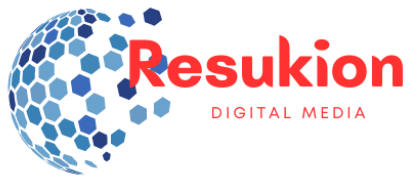Revolutionizing Education with Digital Learning Media
Education is a fundamental right of every individual. It makes us capable of comprehending complex concepts, communicating effectively, and thriving in the modern world. Until a couple of decades ago, educational institutions relied on traditional face-to-face delivery methods to impart knowledge. In the last five years, digital learning media has revolutionized the way education is delivered. Digital learning media refers to the use of technological tools such as smartphones, tablets, personal computers, and other interactive technologies to deliver and enhance the learning experience.
Digital learning media can improve education in several ways. It can provide learners with access to a vast range of educational resources, including videos, textbooks, e-books, and multimedia tutorials. It can also facilitate communication between learners and educators, allowing for instant feedback and the exchange of ideas. Further, digital learning media can be customized to suit individual learner needs, and it enables personalized learning.
This article discusses how digital learning media is changing education by enhancing learning outcomes, reducing costs, and expanding educational opportunities.
Digital Learning Media Enhances Learning Outcomes
With digital learning media, educators can provide learners with interactive and engaging learning experiences that increase knowledge retention and learning outcomes. Digital tools such as video, graphics, and animation can make complex concepts easier to understand. Further, digital media can be used to provide hands-on experiences, simulations, and virtual reality, making learning more fun and interactive.
Digital learning media can also promote active and collaborative learning, allowing learners to work together and share experiences. Online tools like discussion boards, chat rooms, and collaborative worksheets can be used to foster communication and teamwork. Further, digital learning media can be customized to suit individual learning needs, and it enables personalized learning. For example, learners can set their own pace, complete assignments, and access resources as per their schedule and preferences.
Digital Learning Media Reduces Costs
Digital learning media reduces the cost of education in several ways. First, it reduces the cost of traditional classroom space and resources such as textbooks, transportation, and paper. Second, digital learning media reduces the cost of professional development for teachers. With digital tools, educators can attend training sessions and workshops remotely, saving both time and money.
Digital learning media also offers educational institutions an opportunity to expand their reach and offer more courses, programs, and degrees. Online courses can be delivered to thousands of learners, enabling educational institutions to reach learners beyond traditional geographical boundaries. Hence, digital learning media enables educational institutions to decrease costs by scaling their educational services.
Digital Learning Media Expands Educational Opportunities
Digital learning media provides learners with access to educational resources, regardless of their geographic location, time zone, or socioeconomic status. Online courses can be accessed by learners from remote areas, small towns, and rural regions. Further, learners can choose from a variety of online courses, programs, and degrees, regardless of the institution’s location.
Digital learning media can also help learners balance work, family, and education. With flexible scheduling, learners can access educational resources at their convenience, enabling them to juggle work and study commitments. Further, digital learning media can also facilitate non-traditional, part-time, or online degree programs that cater to the needs of adult learners.
Conclusion
Digital learning media is revolutionizing education by enhancing learning outcomes, reducing costs, and expanding educational opportunities. Digital tools such as video, graphics, and animation can make complex concepts easier to understand. Online tools like discussion boards, chat rooms, and collaborative worksheets can be used to foster communication and teamwork. Further, digital learning media can be customized to suit individual learning needs and enable personalized learning.
Digital learning media reduces the cost of education by scaling educational services and reducing the cost of traditional classroom space and resources. It also expands educational opportunities by enabling learners to access educational resources regardless of their geographic location, time zone, or socioeconomic status. Given the increasing importance of education in the modern world, digital learning media has an opportunity to shape education positively and empower learners to thrive in the ever-evolving world.




